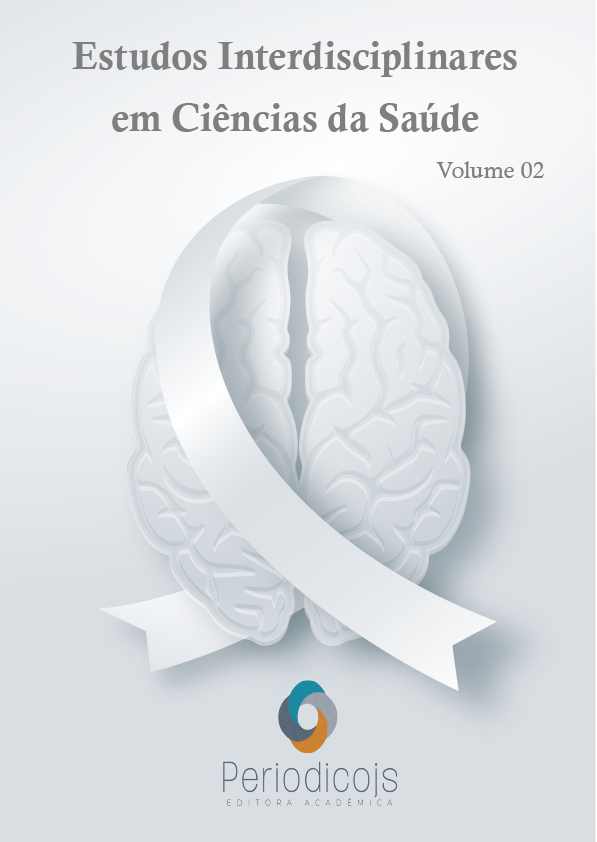Abstract
The objective of the present study was to carry out a literature review on the subject of exercise neuroscience to identify which studies were produced on the exposed subject and how the objective of each study was conceived. To prepare this literature review, independent online searches for articles were carried out between January 2015 and December 2020, in the electronic databases Google Scholar, Scielo, Pubmed/Medline, Cochrane and Web of Science, using selected descriptors. randomly in line with the initial neuroscience theme of exercise. As a search strategy, the descriptors were organized according to two groups: neuroscience and exercise, exercise neuroscience, exercise neuroscience and exercise and neuroscience. The selection of articles was carried out by the researcher himself, independently and without the call of a second reviewer. Of the 98 articles found, only 03 articles fit the search, inclusion and exclusion criteria. It is concluded that although the articles address the neuroscience content involved in brain health, there is a lack of studies that address the aforementioned topic between neuroscience and exercise or exercise neuroscience. It is suggested that more robust and complex studies be carried out in order to start with filling the gaps between the brain and body in the neuroscience of exercise; associated with the benefits of neuroscience for exercise whether through neuroanatomy, neurophysiology or neuropsychology.
References
ASHBROOK, J.B. “Mind” as Humanizing the Brain: Toward a Neurotheology of Meaning. Zygon ;32(3):299-457, 1997.
CARVALHO, H. D. G. et al. Atividade lúdico-educativa para ensino de neurociência aos escolares da rede pública. Brazilian Journal of Health Review, v. 3, n. 3, p. 6458- 6466, 2020.
COLCOMBE, S.J. et al. Aerobic fitness reduces brain tissue loss in aging humans. J GERONTOL A BIOL SCI MED SCI; 58(2):176-80, 2003.
COTMAN CW, BERCHTOLD NC, CHRISTIE LA. Exercise builds brain health: key roles of growth factor cascades and inflammation. Trends Neurosci; 30(9):464-72, 2007.
DA SILVA, C. J. C; DE MELO, Anairtes Martins. Criação e aplicação de um jogo educativo como proposta de ensino aprendizagem a alunos de monitoria na área de anatomia humana geral. Fortaleza, 2019. Disponível em: http://periodicos.ufc.br/resdite/index. Acesso em 02 de abril de 2020.
DE MORAES, A. A., et al. Effect of swimming training on nerve morphological recovery after compressive injury. Neurological research 2018;11:955-962, 2018.
DESLANDES, A. et al. Exercise and mental health: many reasons to move.MNeuropsychobiology 2009;59:191–198, 2008.
DESLANDES, A. C. Neurociência do exercício e do esporte: Uma chamada para a ação. Revista Eletrônica Nacional de Educação Física, v. 6, n. 7, p. 59-61, 2016.
EKKEKAKIS P, et al. The relationship between exercise intensity and affective responses demystified: to crack the 40-year-old nut, replace the 40-year-old nutcracker! Ann Behav. Med; 35(2):136-49, 2008.
GAMARO, G. D. et al. Popularização dos conceitos de neurociências durante a I semana do cérebro em Pelotas – relato de experiência. Brazilian Journal of Health Review, v.3, n.2, p. 3098-3104, Curitiba, 2020.
JUNIOR, A. S. A. Exercício físico, neuroplasticidade e neuroproteção–evidências da bancada. Revista Técnico Científica do IFSC, v. 1, n. 5, p. 25, 2013.
KITAMURA T, MISHINA M, SUGIYAMA H. Enhancement of neurogenesis by running wheel exercises is suppressed in mice lacking NMDA receptor epsilon 1 subunit. Neurosci. Res;47(1):55-63, 2003.
LAUGERO, KD. A new perspective on glucocorticoid feedback: relation to stress, carbohydrate feeding and feeling better. J Neuroendocrinol;13(9):827-35, 2001.
LIST, I.; SORRENTINO, G. Biological mechanisms of physical activity in preventing cognitive decline. Cell. Mol Neurobiol.;30(4):493-503, 2010.
NEEPER, S.A. et al. Exercise and brain neurotrophins. Nature. 1995;373(6510):109. PALMER T.D. et al. Vascular niche for adult hippocampal neurogenesis. J. Comp. Neurol; 425(4):479-94, 2000.
RADAK Z, CHUNG HY, GOTO S. Systemic adaptation to oxidative challenge induced by regular exercise. Free Radic Biol Med; 44(2):153-9, 2008.
SIQUEIRA, F. V.; et al. “Prevalence of falls in elderly in Brazil: a countrywide analysis.” Cad Saúde Publica 27(9): 1819-1826, 2011.
TAKASE, E. Neurociência do esporte e do exercício. Neurociências, v. 2, n. 5, p. 2-7, 2005.
VAN PRAAG, H., et al. Exercise enhances learning and hippocampal neurogenesis in aged mice. Journal of Neuroscience, 25, 8680–8685, 2002, 2005.
VICKERS, J.N. The quiet eye: it’s the difference between a good putter and a poor one, here’s proof. Golf Digest; JANUARY, 96-FF, 2004.
VORKAPIC, C. F. Neurociência do exercício, saúde mental e aprendizagem. Caminhos da Educação Matemática em Revista (Online), v. 4, n. 1, 2015.
VORKAPIC-FERREIRA, C. et al. Nascidos para correr: a importância do exercício para a saúde do cérebro. Revista Brasileira de Medicina do Esporte, v. 23, p. 495-503, 2017.
WINKELMAN, M. Shamanism as the original neurotheology. Zygon; 39(1):193-217, 2004.

